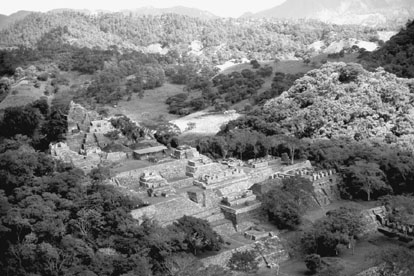

 | Page 538 |  |
But this state-directed exploration was inevitably dependent upon political events. The ultimate failure of the French Scientific Expedition to Mexico (1861–1865) was followed by the failure of French intervention in the Mexican Revolution. In the next century World War I brought an end to the era of exploration. The official backing was a part of national ideological tendencies, and French explorers were deeply influenced by the ideology of colonialism, with strong undertones of Eurocentrism. The scholars’ belief in progress and positivism influenced their studies and hypotheses toward a general evolutionary approach to American civilizations. These theoretical bases would isolate the French scholars from the other investigative currents that were to culminate in the making of American archaeology.

An aerial view of ruins in the Mayan settlement at Tonina, Mexico
(Danny Lehman/Corbis)
However, prior to 1850, the contribution of French explorers to the knowledge and study of ancient civilizations of the Americas was tremendous. The pioneer expedition of Humboldt and Bonpland at the beginning of nineteenth century (1810–1816) generated great interest. Many books on American Indian civilizations were translated, among them those of Bullock, Pionsett, Hall, and Beltrami. The identification of Mayan writing by Raginesque provoked Champollion’s attention. In 1819 an archaeological expedition was sent to El Tajin, in Central Veracruz, and three French explorers—Sussanet, Naudin, and Castillon—were accepted as members of the team. Between 1822 and 1836 no fewer than forty articles on Mexico were published in the Geographical Society Bulletin. Meanwhile, the preparation of Antiquités Mexicaines brought together new scholars. In 1828 Baradère took Dupaix’s manuscripts, drawings, and numerous artifacts from Mexico back to France. Waldeck was sent to London to copy Armendaris’s illustrations, which is how he became involved in Mayan archaeology. He spent many years in Palenque (Baudez 1993), thus earning his nickname, “The Last of the Pioneers” (Stuart 1992). At the same time, Nebel, a German architect sponsored by French funds, worked in Xochicalco, El Tajin, and La Quemada. The list of known Mexican sites grew constantly, and to the ones already mentioned can be added Mitla, monte albán, Uxmal, Tonina,
 |  |